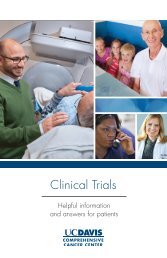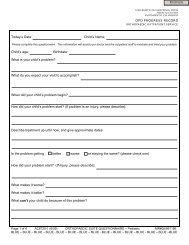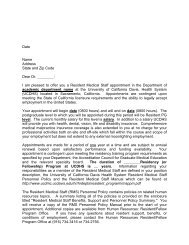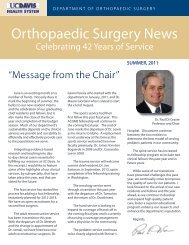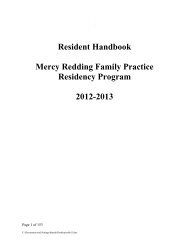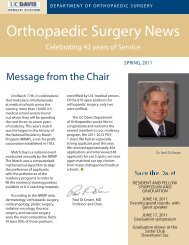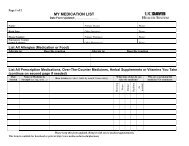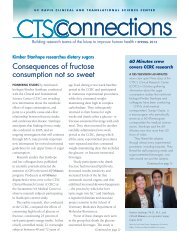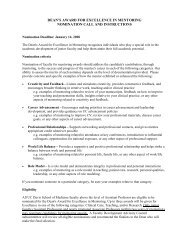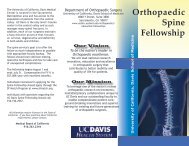Center for Professional Practice of Nursing CPR Guidelines for ...
Center for Professional Practice of Nursing CPR Guidelines for ...
Center for Professional Practice of Nursing CPR Guidelines for ...
Create successful ePaper yourself
Turn your PDF publications into a flip-book with our unique Google optimized e-Paper software.
AED GUIDELINES<strong>Center</strong> <strong>for</strong> <strong>Pr<strong>of</strong>essional</strong> <strong>Practice</strong> <strong>of</strong> <strong>Nursing</strong><strong>CPR</strong> <strong>Guidelines</strong> <strong>for</strong> Health-Care ProvidersSPECIAL SITUATIONS WHEN USING AN AEDHairy Chest:The AED pads may stick to the hair and not stick to the chest. Make sure topress firmly on each pad. If they do not stick to the chest, shave the area withthe razor in the AED carrying case and put on a new set <strong>of</strong> pads.Water:Do not use an AED in water. If the victim is in water, pull the victim out <strong>of</strong> thewater. If the victim’s chest is covered with water, wipe the chest be<strong>for</strong>eattaching the pads.Pacemaker:You can identify pacemakers because they create a hard lump beneath the skin<strong>of</strong> the upper chest. Place the AED pad at least 1 inch to the side <strong>of</strong> thepacemaker.Medicinal Patches:Do not place AED pads on top <strong>of</strong> a medication patch. Remove the patch andwipe the area clean be<strong>for</strong>e attaching the AED pads. Make sure not to touch themedicine with bare hands.Flammable Items:Make sure the scene is safe and the victim is not near flammable items. If youfind a victim in a garage with flammable items (e.g., gasoline, paint thinner,etc.) remove the victim from the area be<strong>for</strong>e attaching and using the AED.6/15/2011




